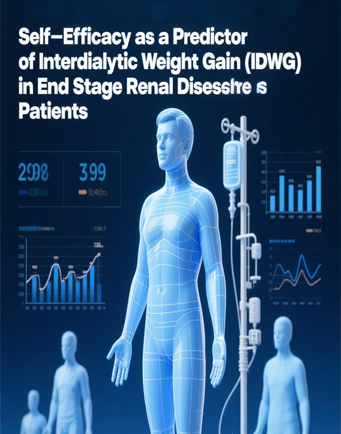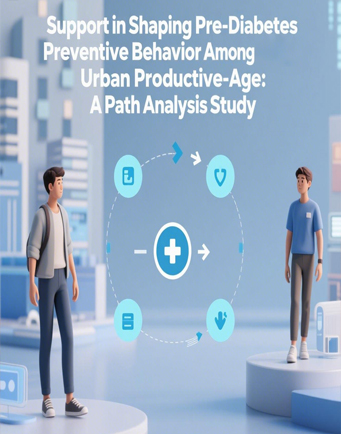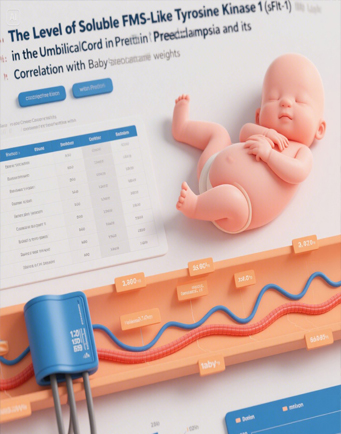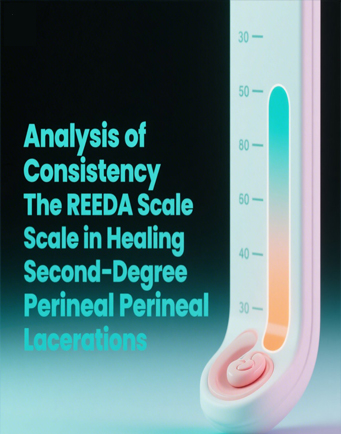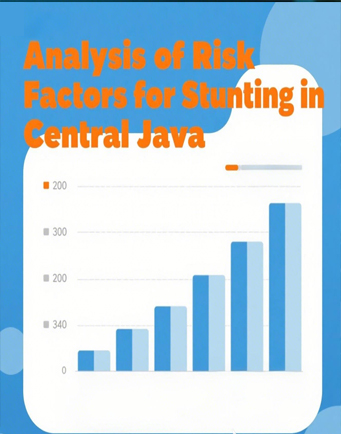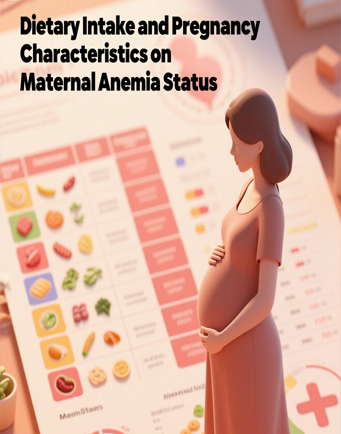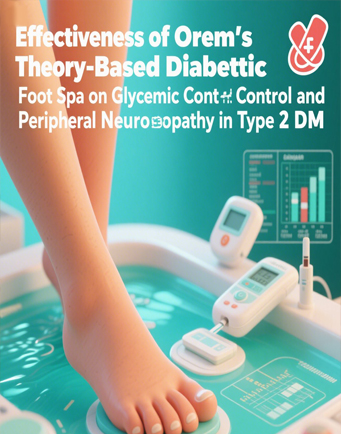The Impact of Visfatin Level Against Blood Pressure Among Pregnant Women
Downloads
Visfatin, a protein with a molecular weight of 52 kDa, has been demonstrated to increase in the bloodstream. Visfatin has been shown in several studies to be a potential marker of preeclampsia. The objective of this study was to describe visfatin levels in pregnant women in Gianyar, Bali. An observational design was employed in this study to describe visfatin levels in 41 pregnant women in Ubud, Gianyar regency, Bali. Visfatin levels were determined by examining EDTA blood samples using the Elisa method and reading them at 450 nm on a microplate reader. The average value of visfatin levels was 6.49 ng/ml, according to the results. The average visfatin level based on hypertension blood pressure respondents was 3.74 ng/ml. This result was lower than that of normal blood pressure respondents. This study's decrease in visfatin levels may have a smaller effect on physiological insulin resistance. The average visfatin level in second trimester respondents was 7.9 ng/ml higher than 5.7 ng/ml in third trimester respondents. The increase in visfatin levels suggests that visfatin may play a role in the pathogenesis of preeclampsia. Visfatin has the potential to be used as a biomarker to detect preeclampsia earlier, allowing pregnant women with preeclampsia to receive appropriate treatment.
ACOG Committee on Obstetric Practice. 2020. Gestational Hypertension and Preeclampsia: ACOG Practice Bulletin, Number 222. (2020). Obstetrics and gynecology, 135(6), e237–e260. https://doi.org/10.1097/AOG.0000000000003891
Adeline, M. E., Laksana, M. A. C., & Atika, A. (2018). Characteristic of Referral Patients With Severe Preeclampsia In Surabaya. Biomolecular and Health Science Journa-l, 1(1), 25–28. https://doi.org/10.20473/bhsj.v1i1.8219
Amiri-Dashatan, N., Koushki, M., Hosseini, H., Khodabandehloo, H., Fathi, M., Doustimotlagh, A. H., & Rezaei-Tavirani, M. (2022). Association between circulating visfatin and pre-eclampsia: a systematic review and meta-analysis. The Journal of Maternal-Fetal & Neonatal Medicine, 35(13), 2606-2618. https://doi.org/10.1080/14767058.2020.1789581
Askie, L. M., Duley, L., Henderson-Smart, D. J., & Stewart, L. A. (2007). Antiplatelet agents for prevention of pre-eclampsia: a meta-analysis of individual patient data. The Lancet, 369(9575), 1791-1798. https://doi.org/10.1016/S0140-6736(07)60712-0
Coban, U., Takmaz, T., Unyeli, O. D., & Ozdemir, S. (2021). Adverse outcomes of preeclampsia in previous and subsequent pregnancies and the risk of recurrence. The Medical Bulletin of Sisli Etfal Hospital, 55(3), 426-431. https://doi.org/10.14744/SEMB.2020.56650
Dewi, N. N. A., Rinawati, L. P., Dewi, N. P. D. P., Paramartha, I. M. K., Diyanti, N. P. I. M. A., Rakhmawati, A., & Bekti, H. S. (2022). Overview of Visfatin Levels in Pregnant Women as a Stunting Biomarker. Jurnal Kebidanan, 12(1), 13-18. https://doi.org/10.31983/jkb.v12i1.8018
Dhariwal, N. K., & Lynde, G. C. (2017). Update in the management of patients with preeclampsia. Anesthesiology clinics, 35(1), 95-106. https://doi.org/10.1016/j.anclin.2016.09.009
Dinas Kesehatan Kabupaten Gianyar. (2020). Profil Kesehatan Gianyar Tahun 2020. Gianyar: Dinas Kesehatan Kabupaten Gianyar.
English, F. A., Kenny, L. C., McCarthy, F. P. (2015). Risk factors and effective management of preeclampsia. Integr Blood Press Control. 8:7-12. https://doi.org/10.2147/IBPC.S50641
Fasshauer, M., Blüher, M. Stumvoll, M., Tönessen, P., Faber, R., & Stepan, H. (2007). Differential Regulation of Visfatin and Adiponectin in Pregnancies with Normal and Abnormal Placental Function. Clinical Endocrinology 66(3), 434–39. https://doi.org/10.1111/j.1365-2265.2007.02751.x
Fasshauer, M., Waldeyer, T., Seeger, J., Schrey, S., Ebert, T., Kratzsch, J., ... & Stepan, H. (2008). Serum levels of the adipokine visfatin are increased in pre‐eclampsia. Clinical endocrinology, 69(1), 69-73. https://doi.org/10.1111/j.1365-2265.2007.03147.x
Ferreira, A. F. A., Rezende, J. C., de Cassia C Oliveira, R., Akolekar, R., & Nicolaides, K. H. (2013). Maternal serum visfatin at 11–13 weeks’ gestation in preeclampsia. Journal of human hypertension, 27(4), 261-264. https://doi.org/10.1038/jhh.2012.10
Fox, R., Kitt, J., Leeson, P., Aye, C. Y., & Lewandowski, A. J. (2019). Preeclampsia: risk factors, diagnosis, management, and the cardiovascular impact on the offspring. Journal of clinical medicine, 8(10), 1625. https://doi.org/10.3390/jcm8101625
Fukuhara, A., Matsuda, M., Nishizawa, M., Segawa, K., Tanaka, M., Kishimoto, K., ... & Shimomura, I. (2005). Visfatin: a protein secreted by visceral fat that mimics the effects of insulin. Science, 307(5708), 426-430. https://doi.org/10.1126/science.109724
Górska, M., Krętowski, A., Nikołajuk, A., Zonenberg, A., Telejko, B., Kuźmicki, M., & Szamatowicz, J. (2009). Serum visfatin concentration is elevated in pregnant women irrespectively of the presence of gestational diabetes. Ginekologia Polska, 80, 14-18. Retrieved from https://journals.viamedica.pl/ginekologia_polska/article/view/46652
Hu, W., Wang, Z., Wang, H., Huang, H., & Dong, M. (2008). Serum visfatin levels in late pregnancy and pre-eclampsia. Acta obstetricia et gynecologica Scandinavica, 87(4), 413-418. https://doi.org/10.1080/00016340801976012
Ihsan, I., Rini, E. A., & Yaswir, R. (2016). Visfatin levels in non-obese, obese, and insulin resistant adolescents. Paediatrica Indonesiana, 56(5), 291-296. http://doi.org/10.14238/pi56.5.2016.291-6
Kar, M. (2014). Role of biomarkers in early detection of preeclampsia. Journal of clinical and diagnostic research: JCDR, 8(4), BE01-BE04. http://doi.org/10.7860/JCDR/2014/7969.4261
Kementerian Kesehatan Republik Indonesia. (2018). Profil Kesehatan Indonesia 2018. Jakarta: Kementerian Kesehatan Republik Indonesia.
Leveno, K. (2018). Williams Obstetrics. 25th ed. New York: McGraw-Hill Education.
Ma, Y., Cheng, Y., Wang, J., Cheng, H., Zhou, S., & Li, X. (2010). The changes of visfatin in serum and its expression in fat and placental tissue in pregnant women with gestational diabetes. Diabetes research and clinical practice, 90(1), 60-65. https://doi.org/10.1016/j.diabres.2010.06.010
Marseglia, L., Manti, S., D'Angelo, G., Cuppari, C., Salpietro, V., Filippelli, M., ... & Arrigo, T. (2015). The role of visfatin in pregnancy, complications and procreation. Journal of Pediatric Biochemistry, 5(01), 002-007. https://doi.org/10.1055/s-0035-1554783
Mastorakos, G., Valsamakis, G., Papatheodorou, D. C., Barlas, I., Margeli, A., Boutsiadis, A., ... & Creatsas, G. (2007). The role of adipocytokines in insulin resistance in normal pregnancy: visfatin concentrations in early pregnancy predict insulin sensitivity. Clinical chemistry, 53(8), 1477-1483. https://doi.org/10.1373/clinchem.2006.084731
Mazaki-Tovi, S., Romero, R., Kim, S. K., Vaisbuch, E., Kusanovic, J. P., Erez, O., ... & Hassan, S. S. (2010). Could alterations in maternal plasma visfatin concentration participate in the phenotype definition of preeclampsia and SGA?. The Journal of Maternal-Fetal & Neonatal Medicine, 23(8), 857-868. https://doi.org/10.3109/14767050903301017
National High Blood Pressure Education Program. (2004). The seventh report of the joint national committee on prevention, detection, evaluation, and treatment of high blood pressure. Bethesda (MD): National Heart, Lung, and Blood Institute (US). Retrieved from https://pubmed.ncbi.nlm.nih.gov/20821851/
Ngala, R. A., Yeboah, F. A., Bawah, A. T., Alidu, H. & Seini, M. M. (2016). Maternal Adiposity and Serum Visfatin Levels During First Trimester Among Pregnant Women With Preeclampsia. International Journal of Advanced Research, 4(8), 960–66. https://doi.org/10.21474/ijar01/1293
Nourbakhsh, M., Nourbakhsh, M., Gholinejad, Z., & Razzaghy-Azar, M. (2015). Visfatin in obese children and adolescents and its association with insulin resistance and metabolic syndrome. Scandinavian Journal of Clinical and Laboratory Investigation, 75(2), 183-188. https://doi.org/10.3109/00365513.2014.1003594
Salan, Y. D. C. (2017). Biomarker terkini dalam usaha memprediksi preeklampsia. Berkala Kedokteran, 13(1), 119-128. http://dx.doi.org/10.20527/jbk.v13i1.3448
Shaheen, A., Nazli, R., Fatima, S., Ali, R., Khan, I., & Khattak, S. (2016). Adipokine Serum visfatin level in pregnancy induced hypertension and uncomplicated pregnancy. Pakistan Journal of Medical Sciences, 32(6), 1419-1424. https://doi.org/10.12669/pjms.326.10917
Ukah, U. V., De Silva, D. A., Payne, B., Magee, L. A., Hutcheon, J. A., Brown, H., ... & von Dadelszen, P. (2018). Prediction of adverse maternal outcomes from pre-eclampsia and other hypertensive disorders of pregnancy: a systematic review. Pregnancy hypertension, 11, 115-123. https://doi.org/10.1016/j.preghy.2017.11.006
Copyright (c) 2023 JURNAL INFO KESEHATAN

This work is licensed under a Creative Commons Attribution-NonCommercial-ShareAlike 4.0 International License.
Copyright notice
Ownership of copyright
The copyright in this website and the material on this website (including without limitation the text, computer code, artwork, photographs, images, music, audio material, video material and audio-visual material on this website) is owned by JURNAL INFO KESEHATAN and its licensors.
Copyright license
JURNAL INFO KESEHATAN grants to you a worldwide non-exclusive royalty-free revocable license to:
- view this website and the material on this website on a computer or mobile device via a web browser;
- copy and store this website and the material on this website in your web browser cache memory; and
- print pages from this website for your use.
- All articles published by JURNAL INFO KESEHATAN are licensed under the Creative Commons Attribution 4.0 International License. This permits anyone to copy, redistribute, remix, transmit and adapt the work provided the original work and source is appropriately cited.
JURNAL INFO KESEHATAN does not grant you any other rights in relation to this website or the material on this website. In other words, all other rights are reserved.
For the avoidance of doubt, you must not adapt, edit, change, transform, publish, republish, distribute, redistribute, broadcast, rebroadcast or show or play in public this website or the material on this website (in any form or media) without appropriately and conspicuously citing the original work and source or JURNAL INFO KESEHATAN prior written permission.
Permissions
You may request permission to use the copyright materials on this website by writing to jurnalinfokesehatan@gmail.com.
Enforcement of copyright
JURNAL INFO KESEHATAN takes the protection of its copyright very seriously.
If JURNAL INFO KESEHATAN discovers that you have used its copyright materials in contravention of the license above, JURNAL INFO KESEHATAN may bring legal proceedings against you seeking monetary damages and an injunction to stop you using those materials. You could also be ordered to pay legal costs.
If you become aware of any use of JURNAL INFO KESEHATAN copyright materials that contravenes or may contravene the license above, please report this by email to jurnalinfokesehatan@gmail.com
Infringing material
If you become aware of any material on the website that you believe infringes your or any other person's copyright, please report this by email to jurnalinfokesehatan@gmail.com.


